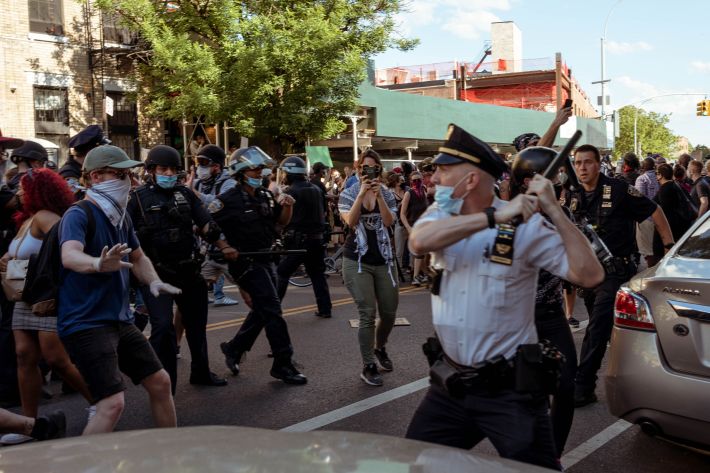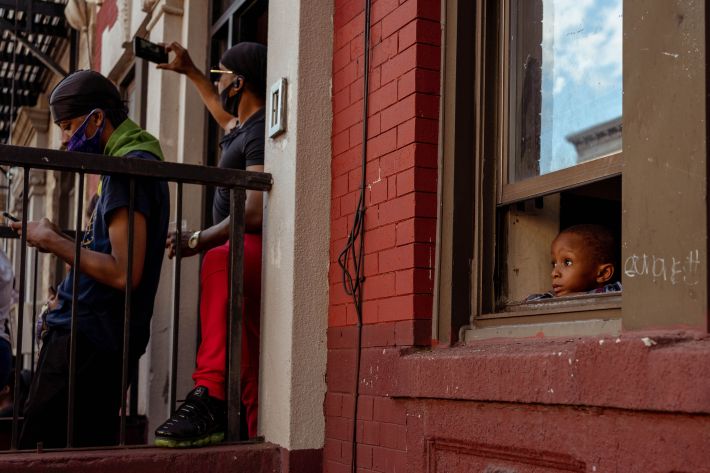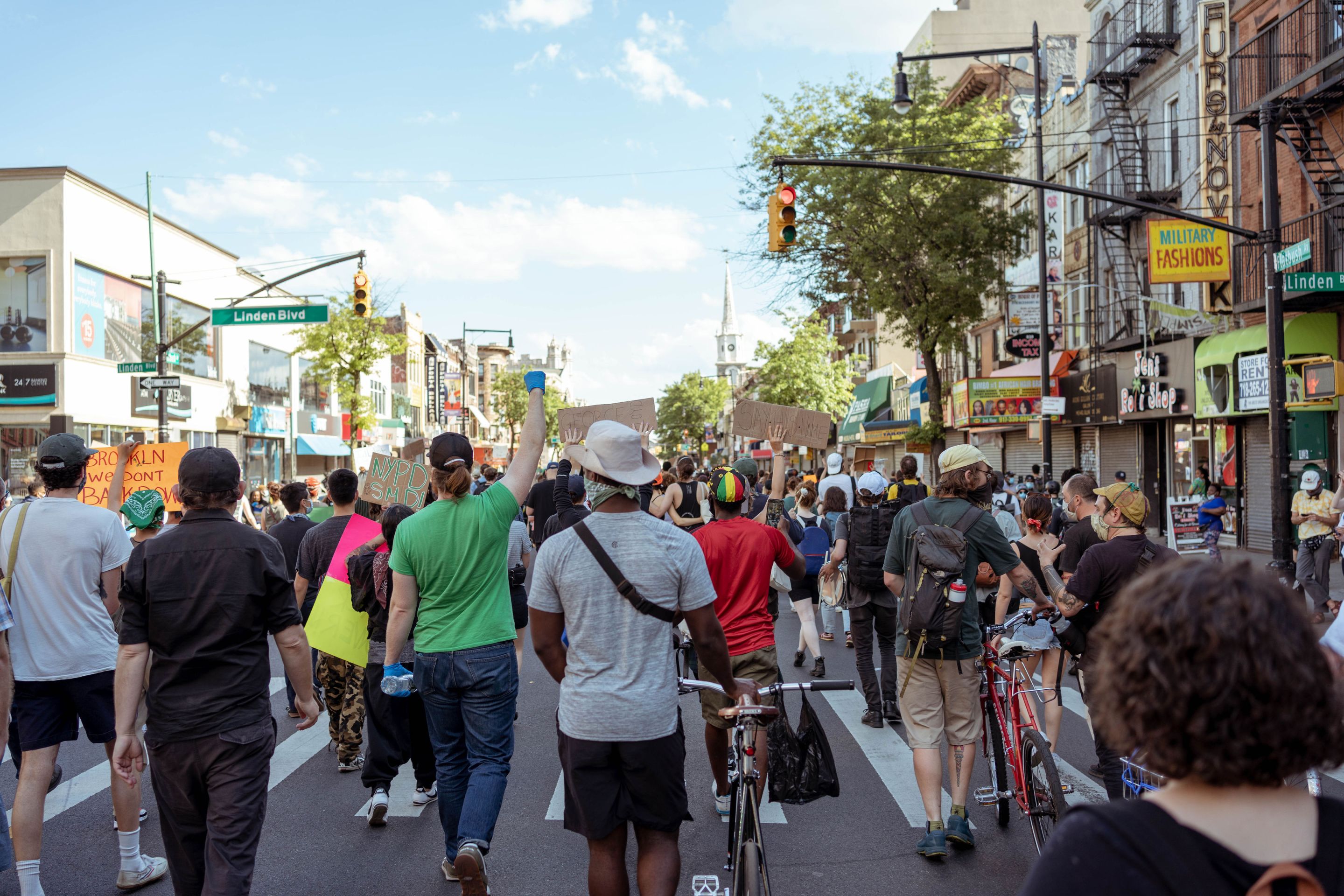
The most anxious moments of our peaceful protest for justice arrived at the corner of Bedford and Tilden avenues in Flatbush on Saturday. For over an hour we marched down Flatbush, taking a left turn at the Old Navy. We were angry, we were irate, we were exasperated but we were not violent.
Then the march was halted.
With a helicopter flying only just above the rooftops, the wind from its powerful blades blinding us all, the police charged the crowd. Our hands were up but they pushed us in all directions and beat some of us.
They forced our group, thousands strong, onto the sidewalks.
They used pepper spray and batons to ensure swift compliance. It was a brutal, unforgiving response to a march intended to protest police brutality.

The catalyst was not projectiles hurled from the crowd nor was it impending violence towards the community or officers. Instead, it appeared, the police wanted to stop the march from moving through the streets. They penned us onto the sidewalk and brought us to a halt for nearly an hour. A buzz swept through the crowd-- the police wanted us to disperse; we had reached the end of our route.
The tense standstill continued for nearly an hour. The crowd grew agitated and the police grew impatient.
Finally a resolution came when law enforcement reversed their decision and let us proceed up Bedford, making a right turn on Lenox. The tension subsided and the march resumed peacefully.
There were similar instances on Saturday throughout the city.

Most notoriously, two police SUVs ran over a crowd of protestors near Prospect Park. The mayor callously defended the police’s actions saying “it was inappropriate for the protestors to surround a police vehicle.”
There is a commonality within these flashpoints; a battle between police and protestors over the purpose, function and sanctity of streets.
We must recognize that streets are more than just conduits for transportation and commerce. Our great boulevards and avenues can do more than host the occasional parade and farmers market. Thoroughfares can, from time to time, play a vital role in civic discourse and democracy. In fact, protest and engagement on streets is crucial to a healthy republic.

Every great social movement plays out, in some form or fashion, on the streets. Here in the US, the Civil Rights, Suffrage and Anti-War movements of the 1960s & '70s played out largely on public right-of-way. Internationally, street protests have brought down governments and dictators alike.
Marches can catalyze revolution.
The reason for this is rather simple, streets are often society’s most accessible and open public spaces. For years, transportation advocates have used “Streets are for People” as a rallying cry, but today I would propose something even more fundamental; “Streets are for Democracy.”
New York’s leaders have forgotten this.
This is like pouring gasoline on a raging fire. Curfew and doubling of police on our streets is a recipe for disaster. https://t.co/GVwV0DFMTT
— Donovan Richards Jr. (@DRichardsQNS) June 1, 2020
Anyone who has tried to get a permit for a march in recent years has undoubtedly come up against a litany of red-tape and bureaucratic pushback. The rationale is often breathtakingly myopic; busses must keep running and cars have to keep moving. Protests, with their mess and fuss, are secondary or even tertiary priorities.
Implementing a curfew and increasing police officers in our streets is the same as silencing our voices. We will not have it!https://t.co/WoS19pXlZU
— Ydanis Rodriguez (@ydanis) June 1, 2020
At best this can only produce an oppressive environment where authorities are able to stifle dissent by the wholesale rejection of permits and allowances. At worst and can actually lead to violent clashes between police and otherwise peaceful protestors simply because protestors are where they’re not supposed to be. I also worry that the just-announced curfew will amplify this challenge even more as protestors and everyday citizens alike are harassed by police simply for being outside after 11 p.m.
I do not wish to dwell on the problem, without offering a solution.
First, we can lower the barriers to obtaining a permit for marching in the street, especially during times of national consequence, like the one we find ourselves in now. Protests often develop rapidly and loosely, without much organization. On that basis alone, it can be difficult to attain a permit. Navigating the process can also be confusing and esoteric to the uninitiated. Streamlining this process can only yield positive results for everyone involved.
Secondly, the police should be encouraged to make expansions to permits based on real world factors like crowd size and flow. Protests, like the ones that I attended in Brooklyn this weekend are largely ad-hoc, and we must take the same approach with our streets as well. There must be clear communication and constant communication with organizers or on-site leaders; if it becomes clear that a protest must move along a certain street before reaching a conclusion then police must be encouraged to make adjustments.
This can serve as a key de-escalation strategy, as allowing marches to move without impediment can keep growing crowds calm and serve to alleviate tension between law enforcement and participants. Alternatively, blocking off a mobile protest can lay the foundation for confrontation.
More broadly, we must recognize the ad-hoc nature of the urban streetscape. Yes our avenues can move bicycles, busses, trucks, cars and pedestrians but they can also propel our democracy.
Let the people march.
Shabazz Stuart is the founder and CEO of Oonee. You can find him @ShabazzStuart on Twitter. Photos were generously provided by Kel Bush, who can be found at @bush_kel on Twitter or on his website kelbush.com






